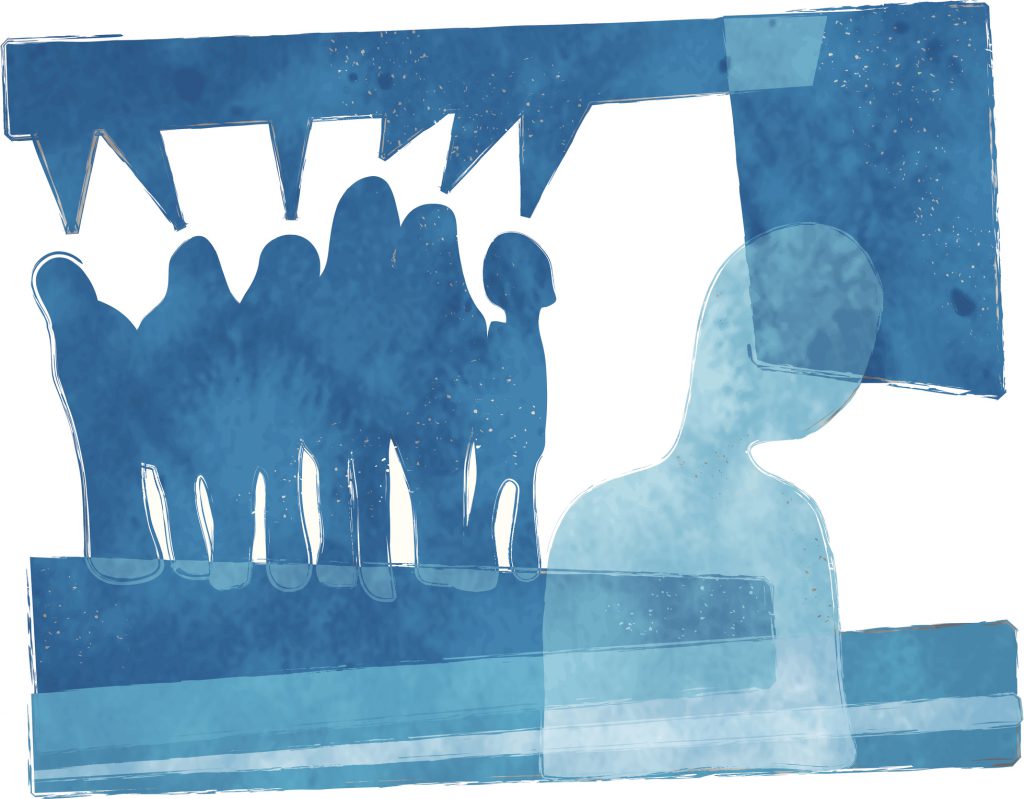Unpacking the Link Between Teen Victimization and Mental Illness

While childhood is an important time, developmentally-speaking, adolescence is when mood, anxiety, and substance abuse disorders show up more frequently, along with disruptive behavior and psychosis. Adolescence is also when some types of victimization, such as peer-to-peer bullying and sexual abuse, become heightened risks.
Clinical scientists have struggled to prove that victimization actually causes any kinds of mental illness, in part because psychiatric conditions result from hundreds of factors.
But an international research team reports that they’ve strengthened the case for a causal contribution by ruling out some hypotheses that would explain away the adolescent victimization-psychopathology link.
The scientists represent Duke University, King’s College London, the South London and Maudsley National Health Service Foundation Trust, and the University of North Carolina at Chapel Hill, and they report their results in Clinical Psychological Science.
The researchers, who include APS Fellows Terrie E. Moffitt and Avshalom Caspi of Duke, studied data from a sample of 2,232 twins in Great Britain gathered over a 13-year period, beginning when the subjects were 5 years old.
Most of the prior research on this subject focused on physical and sexual abuse as well as neglect, centered on mistreatment in the household rather than the broader world, and involved children more often than adolescents
The researchers studied symptoms of externalizing (attention-deficit/hyperactivity disorder, oppositional defiant disorder, antisocial personality, pyromania, kleptomania, substance use), internalizing (e.g. anxiety, depressive disorders, obsessive-compulsive disorders, trauma and dissociative disorders) and thought disorders (disordered thinking, often a symptom of schizophrenia or bipolar mania).
An analysis of the results showed that individuals who had experienced two types of victimization showed more symptoms than those who experienced one type, and those who experienced three types showed even more symptoms. This suggests that maltreatment makes general, rather than specific, contributions to psychiatric disorders, the authors said.
The researchers checked self-report distortions by interviewing individuals about their twin’s victimization and behavior, as well as interviewing parents and teachers to identify victimization, mental illness symptoms, and behavior issues.
Finally, the researchers examined whether genetic factors or a shared family environment could explain both victimization and psychiatric disorder. The choice of sample, a large number of twins born in the same year helped resolve some genetic and environmental issues. Using identical and same-sex fraternal twins allowed them to isolate genetic contributions (comparing outcomes between identical twins, then compared those results to the outcomes between fraternal twins).
The study results, the authors suggest, make a case for intensifying prevention of abuse, bullying, neglect, and crime, since the outcomes of these forms of victimization may be more far-reaching than previously believed. Further, it supports the notion that parents, school administrators, and clinicians should deliver psychological treatment to victimized adolescents to help offset mental health problems later on, they add.
Coming from the other side, treatment for psychiatric conditions could include a broader inquiry into past victimization, as any form may have contributed to eventual disorder, the researchers said.
Reference
Schaefer, J. D., Moffitt, T. E., Arseneault, L., Danese, A., Fisher, H. L., Houts, R., . . . Caspi, A. (2017). Adolescent victimization and early-adult psychopathology: Approaching causal inference using a longitudinal twin study to rule out noncausal explanations. Clinical Psychological Science. doi:10.1177/2167702617741381




APS regularly opens certain online articles for discussion on our website. Effective February 2021, you must be a logged-in APS member to post comments. By posting a comment, you agree to our Community Guidelines and the display of your profile information, including your name and affiliation. Any opinions, findings, conclusions, or recommendations present in article comments are those of the writers and do not necessarily reflect the views of APS or the article’s author. For more information, please see our Community Guidelines.
Please login with your APS account to comment.